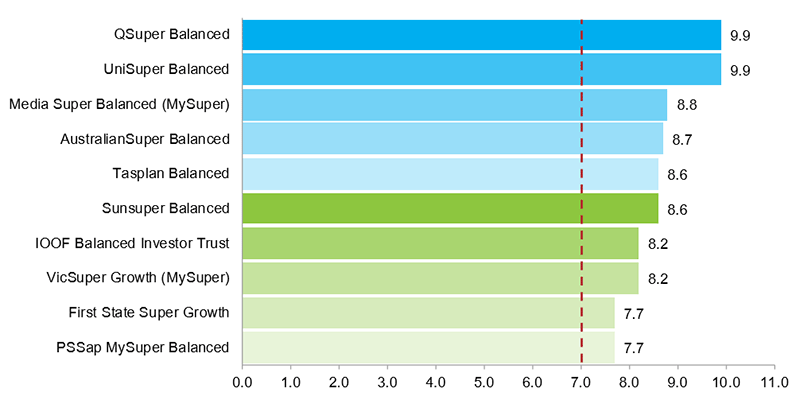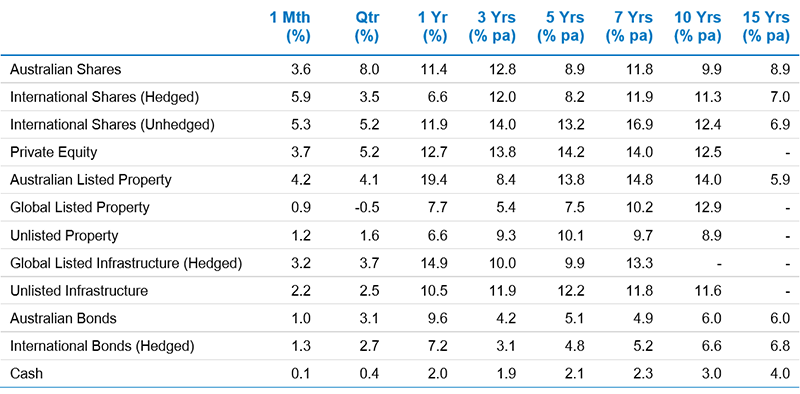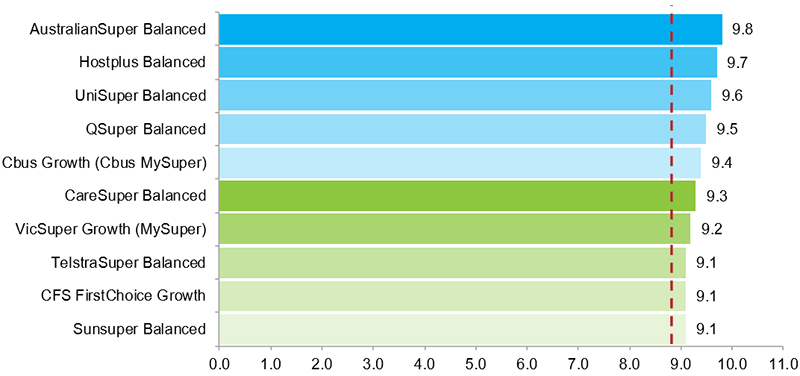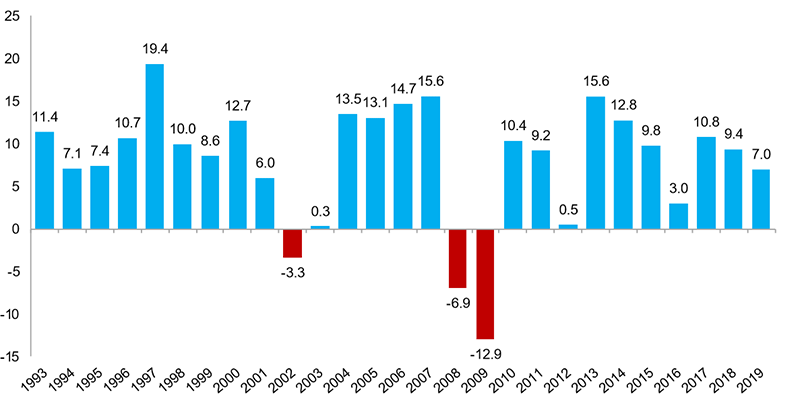Top-performing super funds for 2018-19: challenging times ahead
Super funds posted another stellar run, but clouds are building as assets reach peak valuation, warns Chant West.
Australian super funds delivered a record-breaking tenth straight year of positive returns to members last financial year, with the median growth fund up 7 per cent, says superannuation research house Chant West.
But the soaring returns may not be sustainable and challenging times loom because many sectors are near peak valuation. That’s the warning from Chant West senior investment manager Mano Mohankumar.
Industry super funds QSuper and UniSuper tied for top spot, returning 9.9 per cent for the year in their balanced funds. Even the worst performers in the growth category returned 4.3 per cent.
Coming in third was Media Super Balanced (MySuper), which returned 8.8 per cent, followed by Australian Super Balanced (8.7 per cent) and Tasplan Balanced (8.6 per cent).
“Fund members should be very pleased with the 2018/19 return of 7 per cent. It’s better than what most experts predicted a year ago and it’s about 5.5 per cent above the current rate of inflation – well above the typical long-term objective which is to beat inflation by 3.5 per cent," Mohankumar says.
Growth funds are defined by Chant West as those which have a 61 to 80 per cent allocation to growth assets.
Funds had a strong fiscal-2019, but Mohankumar says members would be wrong to assume that these returns are sustainable.
“That’s a tremendous run, but we should remember that it partly represents the recovery from the global financial crisis, which produced two consecutive financial year losses in 2008 and 2009,” he says.
“So it would be a mistake to assume that the level of returns we’ve seen recently is sustainable.
“Indeed, with many asset sectors looking to be fully valued or close to it, we’re expecting some challenging times ahead.”
Top 10 performing growth funds (1 year to June 2019 - %)

Source: Chant West (red line – survey median)
Chant West highlighted that the equal top performers, QSuper Balanced and UniSuper Balanced, achieved their outperformance with vastly different investment strategies.
“QSuper has a meaningful allocation to unlisted assets such as property, infrastructure and private equity. However, where its strategy is unique is that it further smooths out returns for members by investing significantly less in listed shares than other funds," Mohankumar says.
"Against that, it maintains a significant allocation to long-duration bonds, which carry sharemarket-like risk but are a better diversifier against sharemarket falls than traditional bonds.
“UniSuper, in contrast, has a strong focus on listed assets. It prefers to gain its exposure to property and infrastructure by taking large stakes in high quality listed companies.
"UniSuper believes that taking this listed market route has enabled it to be opportunistic in building a portfolio of higher quality property and infrastructure assets at attractive prices.”
Mohankumar supports the notion that there is no single best approach to investing.
Looking across the asset classes, Australian shares were up a healthy 11.4 per cent. Listed property was the strongest performer over the year, returning 19.4 per cent.
With interest rates at record low, cash was the worst performing sector with a return of just 2 per cent, Chant West said.
Asset sector performance (results to 30 June 2019)

Source: Chant West
Across all risk categories – ranging from high growth to conservative – Chant West found that all met their long-term return objectives, which range from CPI + 2 per cent for conservative funds to CPI + 4.75 per cent for growth.
Diversified fund performance (results to 30 June 2019)

Performance is shown net of investment fees and tax. It is before administration fees and adviser commissions. Source: Chant West
Looking longer term, AustralianSuper Balanced comes out as the top performing growth fund over ten years (9.8 per cent), followed by Hostplus Balanced (9.7 per cent) and UniSuper Balanced (9.6 per cent).
Top 10 performing growth funds (10 years to June 2019 – % pa)

Source: Chant West (red line – survey median)
Growth funds have delivered positive returns for the last decade, with the last year of negative returns being felt during the global financial crisis. Over the past 27 years, growth funds have only delivered negative returns in three of the years.
Growth funds – financial year returns (%)

Performance is shown net of investment fees and tax. It is before administration fees and adviser commissions. Source: Chant West

